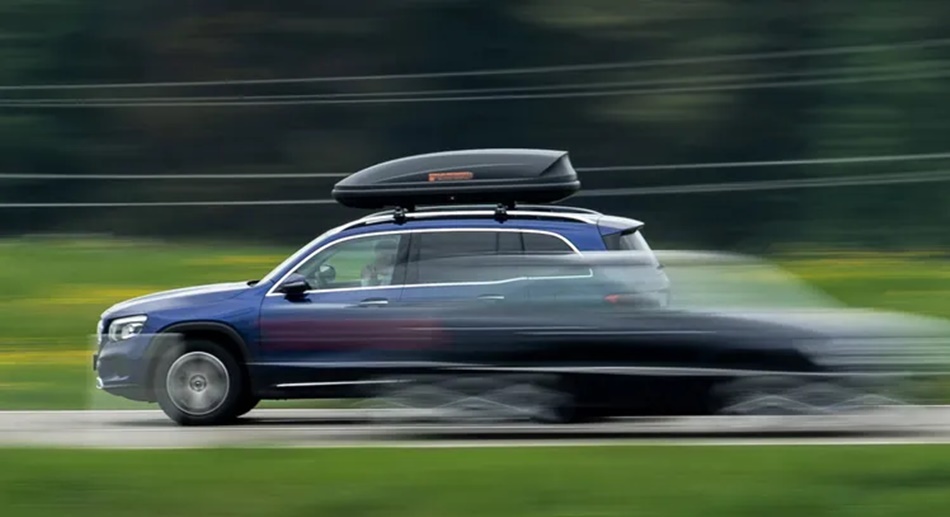How fast can I drive with a roof box?
If there is no longer enough space in the trunk, a roof box may be needed. But how fast can you actually drive it?

If you want to transport luggage on the car roof, you need to know that attachments such as a roof box change both the weight and the center of gravity of the vehicle – and with it the handling. In addition, the car with a roof box reacts more sensitively to side winds.
Note the manufacturer’s information
Caution is therefore called for, especially on bridges, in forest aisles or when overtaking trucks. The Road Traffic Act (StVO) does not stipulate a maximum speed for driving with a roof box. However, car clubs and the TÜV Süd advise not to drive faster than 130 km/h. A maximum speed specified by the manufacturer of the box should not be exceeded under any circumstances.
Mount securely before loading
Before you start, you should ensure that the roof box is installed securely. Insufficient fastening can quickly endanger traffic and yourself. Insufficiently fastened roof boxes can quickly pose a risk to you and other road users in the event of unexpected braking maneuvers or even accidents. Follow the manufacturer’s instructions step by step. To ensure that the bracket does not slip later, you should thoroughly clean the contact points on the roof. This is especially true for boxes that you attach with magnets. A clean surface is the basis for stability.
The boxes are vehicle-specific
Borrowing a roof box from your neighbor can be a bad idea. Because the fastening elements of the carrier system are vehicle-specific. Therefore, drivers should be sure that the system actually fits their car. The box is then placed on the carrier. Modern box systems are standardized according to DIN 75302 or ISO 11154.
It is also important to ensure that the box and its load do not exceed the maximum roof load. See the car’s owner’s manual for details.
This weight results from the weight of the carrier, the roof box and the luggage. If you are unsure about the total weight, weighing is the only way to ensure appropriate security. If necessary, simply use a bathroom scale.
Roof luggage: How to load the box correctly
When loading, distribute all luggage evenly. You should especially avoid high loads in the front part. Heavy luggage is better stowed in the trunk.
Secure the luggage by filling the top of the roof box with functional clothing, for example. This reduces damage caused by emergency braking. If you want even more stability, use tension belts, ski racks or safety nets inside the boxes.
After 50 kilometers, drivers should check the fastenings again and tighten them if necessary.
Adjust your driving behavior
The luggage on the roof can have a massive impact on the driving characteristics of the car: the braking distance increases and the car leans more in curves. In addition, a roof box offers more surface area for wind currents to attack. This can lead to tricky moments, especially on bridges or when emerging from the slipstream.
As soon as the roof is fully loaded, you should check the tire pressure and the adjustment of the headlights so that oncoming traffic is not dazzled.




